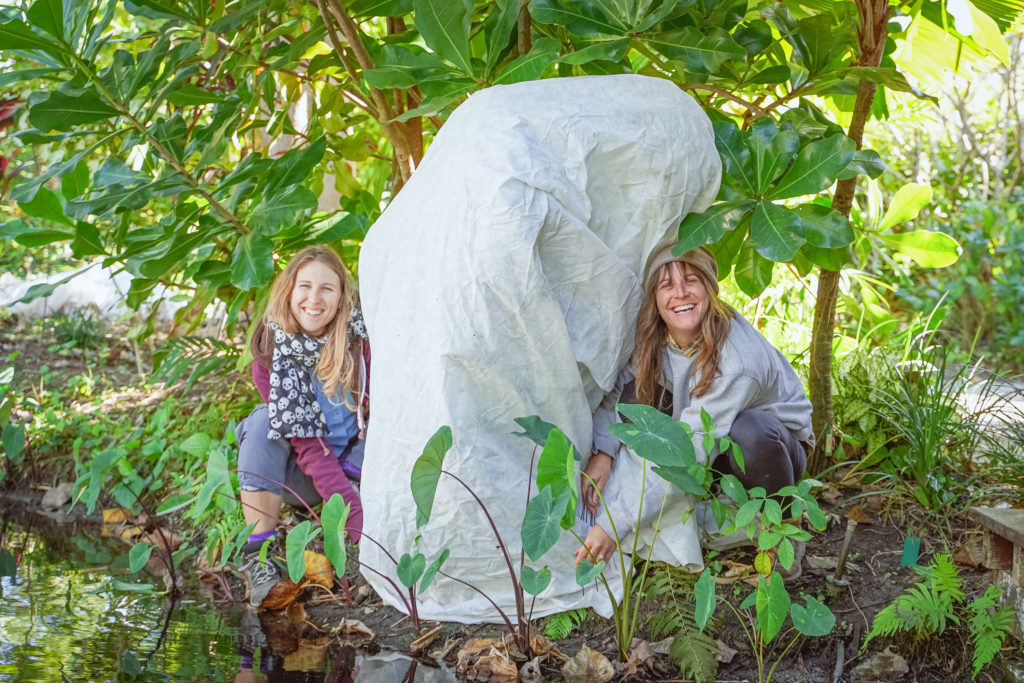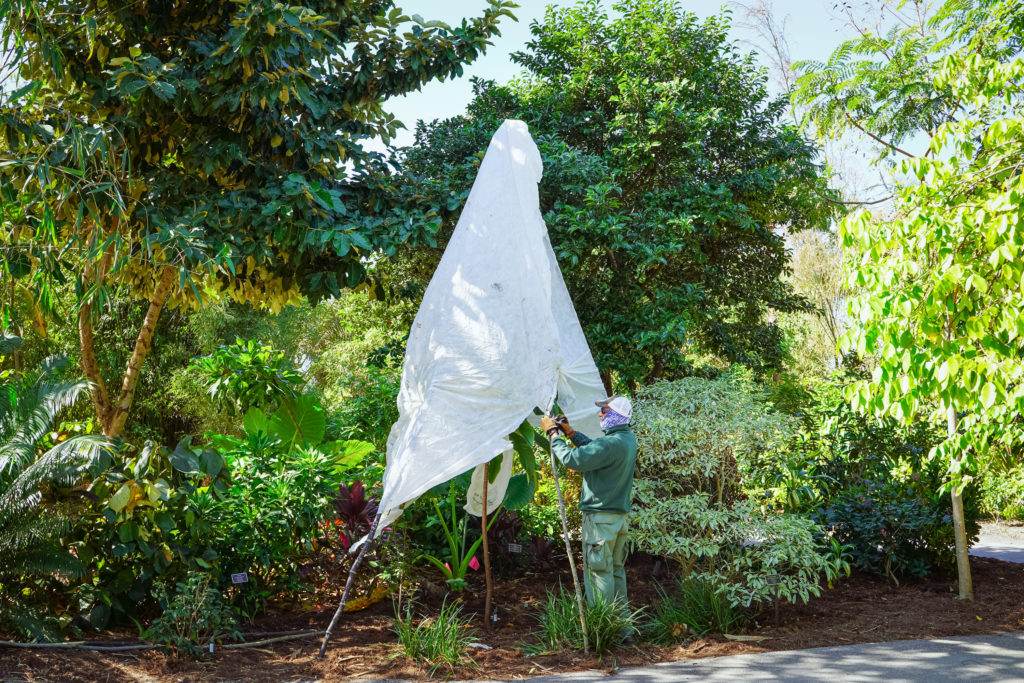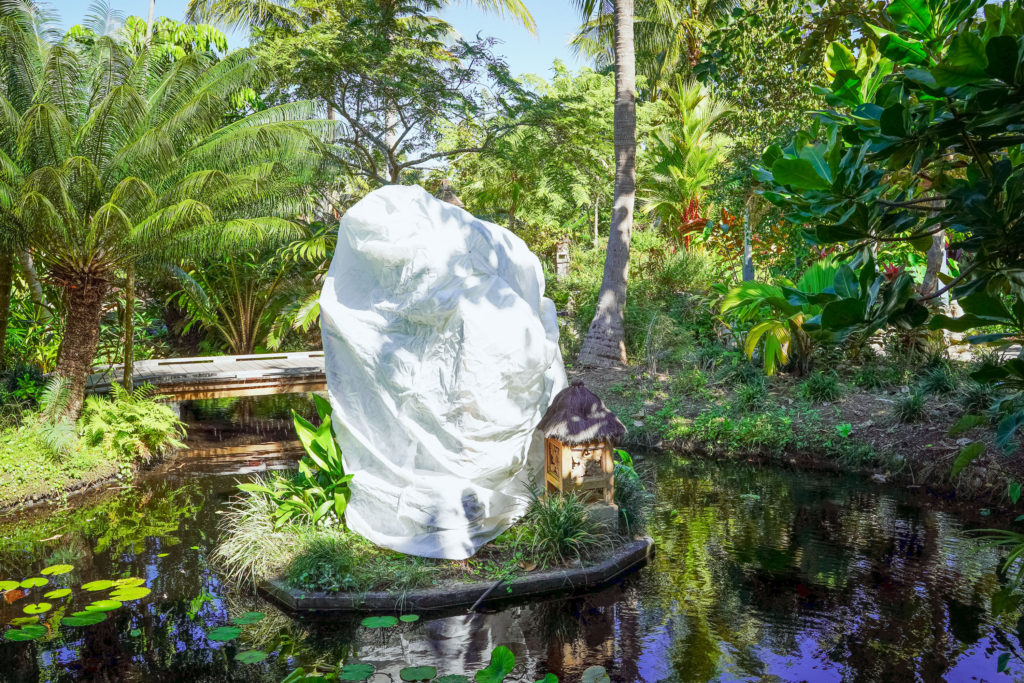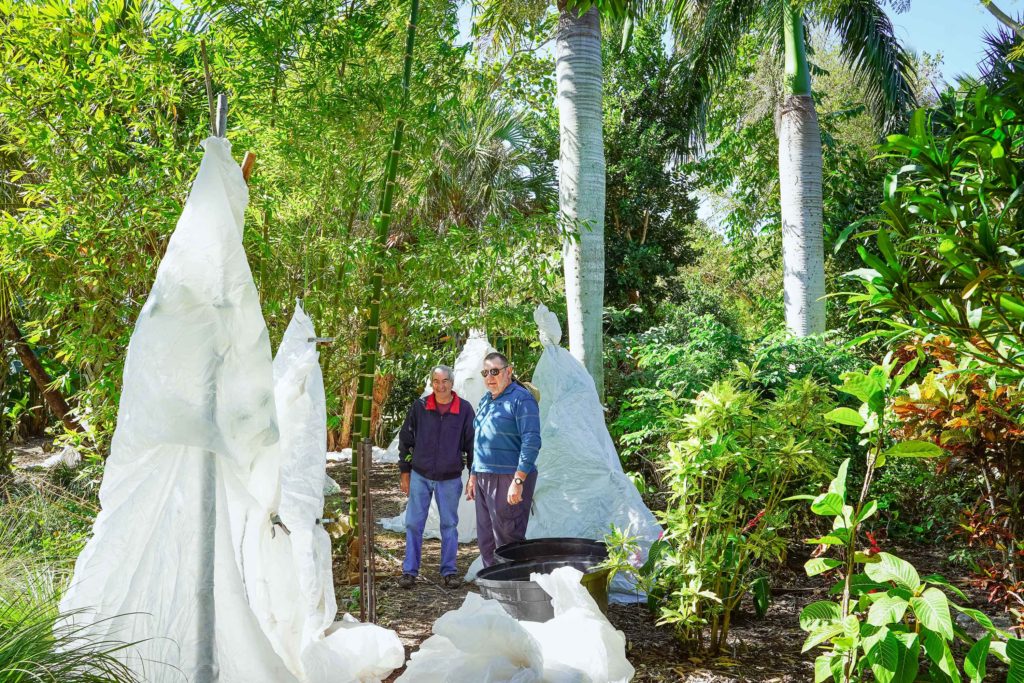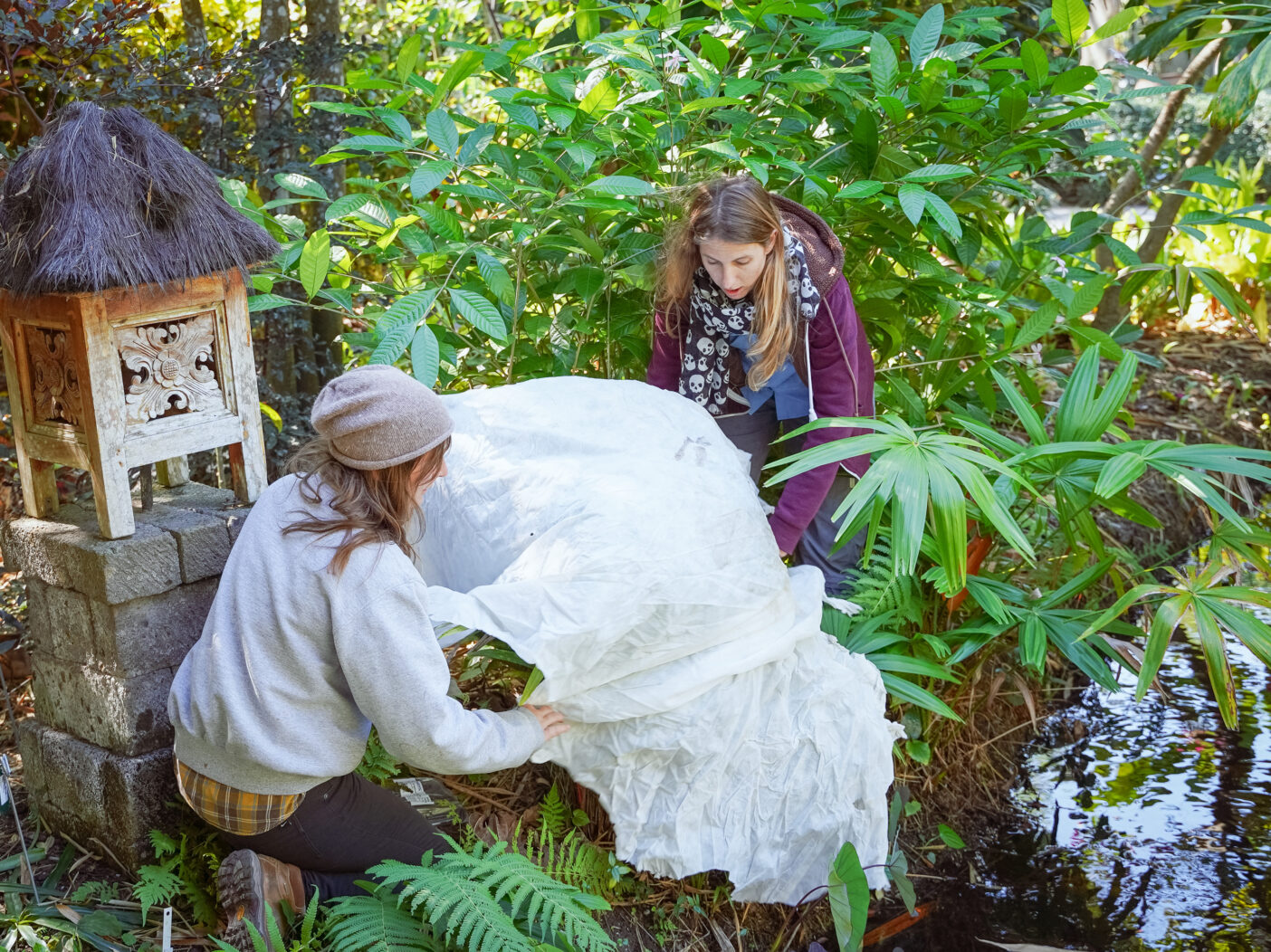
We bet you bundled up for the latest temperature dip, and we’re doing the same for some of our plants. We use several strategies to protect the Garden from cold air and wind chill, such as covering our most cold-sensitive plants; hanging thermal cloth as a wind break; heating our greenhouses; and irrigating plants with warm water before and during the temperature dip.
You can take similar precautions at home:
- Heaters may help in contained areas or near isolated specimens, but beware of fire.
- Use non-LED Christmas lights with sheet coverings around plants to generate a small amount of heat.
- Move potted plants indoors.
- When covering your plants, use frost cloth or other breathable materials. Don’t use plastic or heavy coverings as these may damage them.
- Don’t simply cover the plant’s canopy; secure a covering to the ground to take advantage of rising heat.
- Orchids and epiphytes should be watered well leading up to the temperature drop, but then kept dry during the cold. This helps prevent fungal and bacterial diseases from occurring.
- Add mulch to your plant beds to insulate roots and retain heat.
- Think about the cold in advance: When installing cold-sensitive plants, take advantage of microclimates in the yard, such as: courtyards; heated pool areas; densely planted areas; and the warm, southern outer wall of your house. Cold-sensitive plants will fare better in these slightly warmer spots.
After the cold:
- Monitor for disease, especially on sensitive species, such as palms.
About the Authors
Nick Ewy is the Director of Collections at Naples Botanical Garden.
Cameron Cole is the Plant Health Specialist of Naples Botanical Garden.

